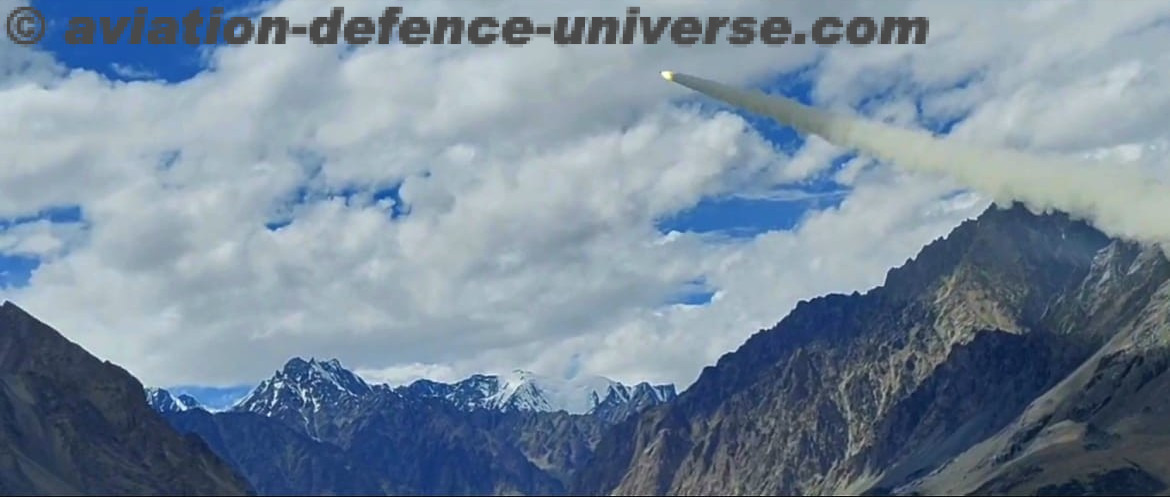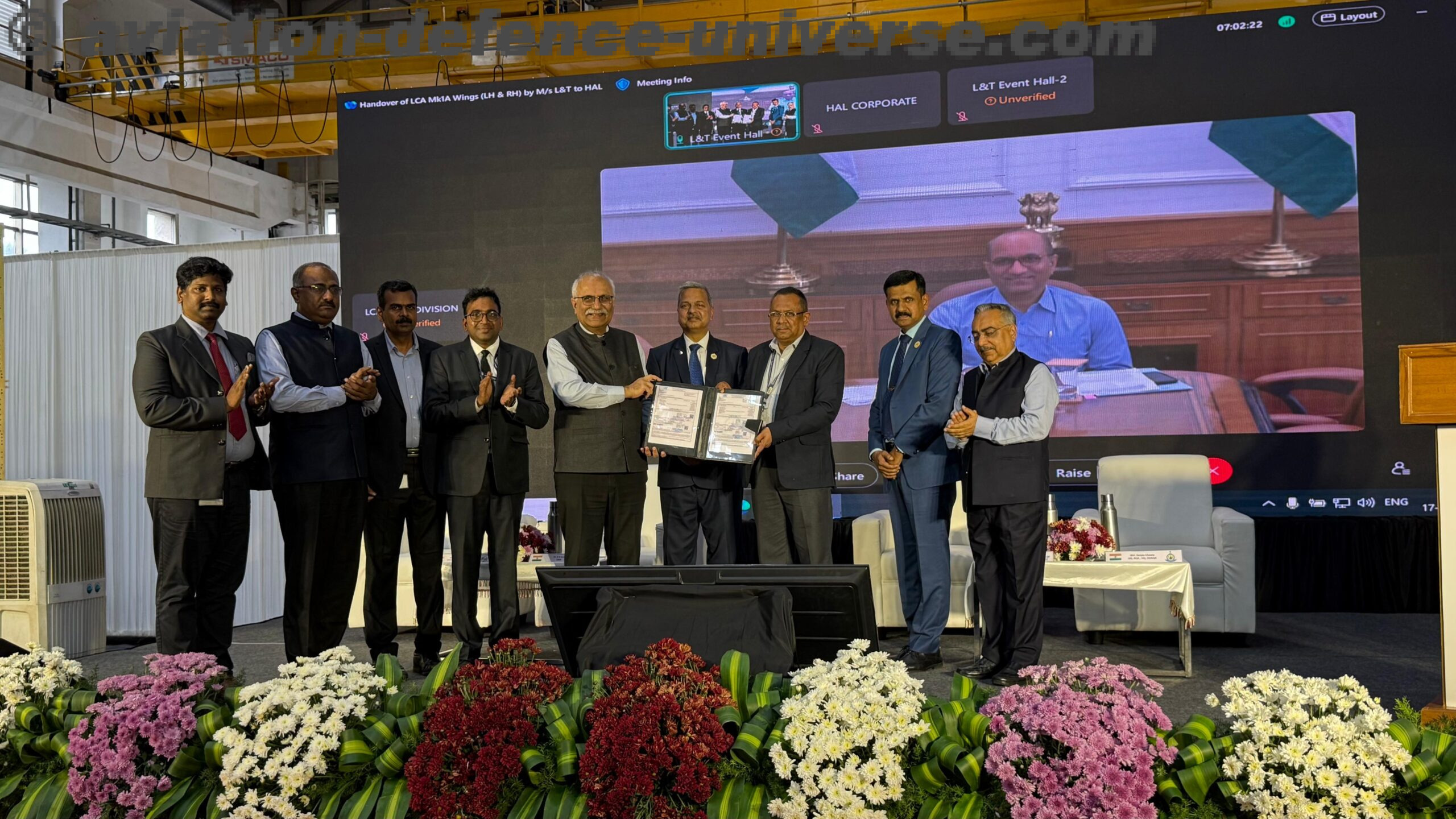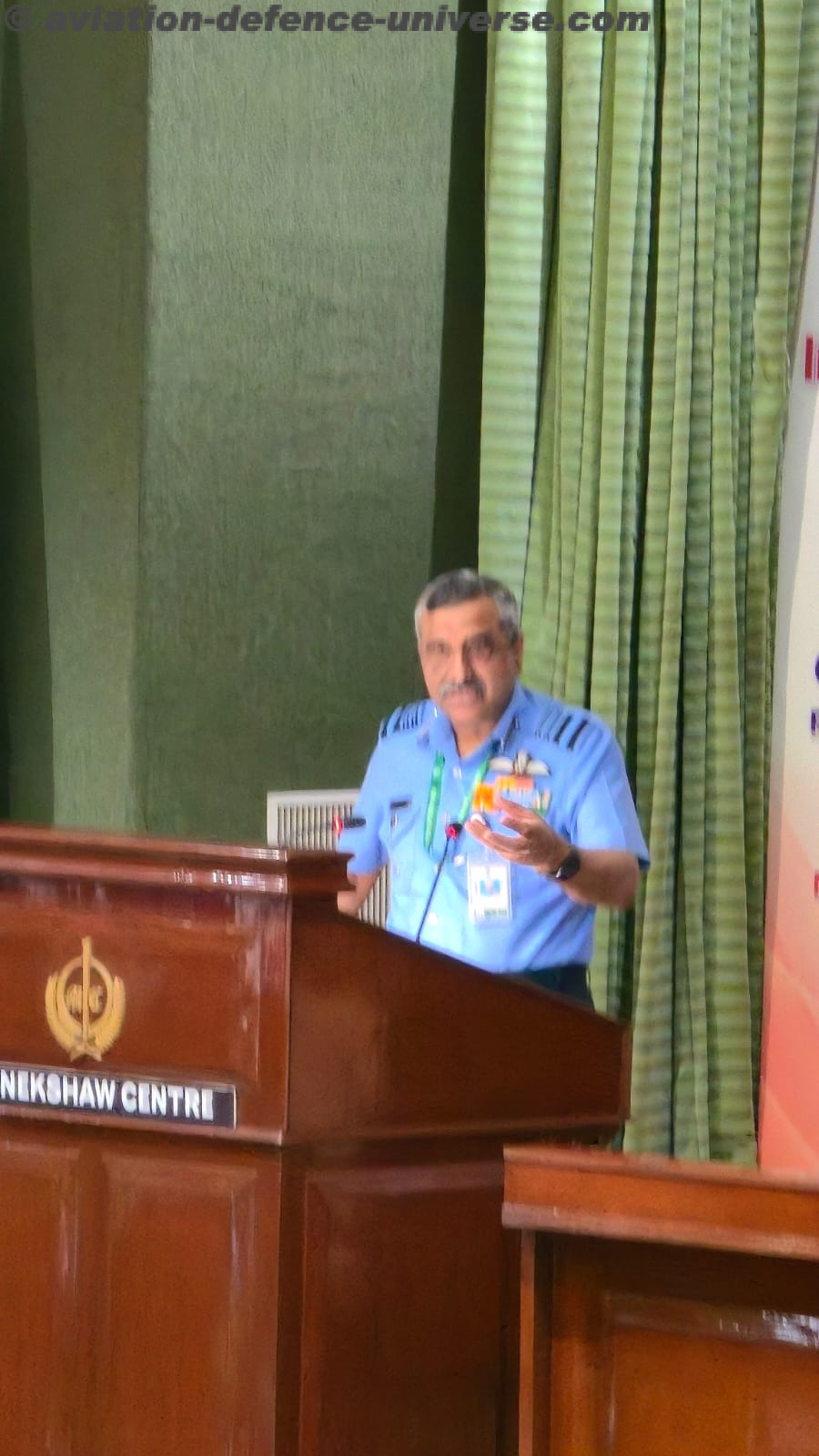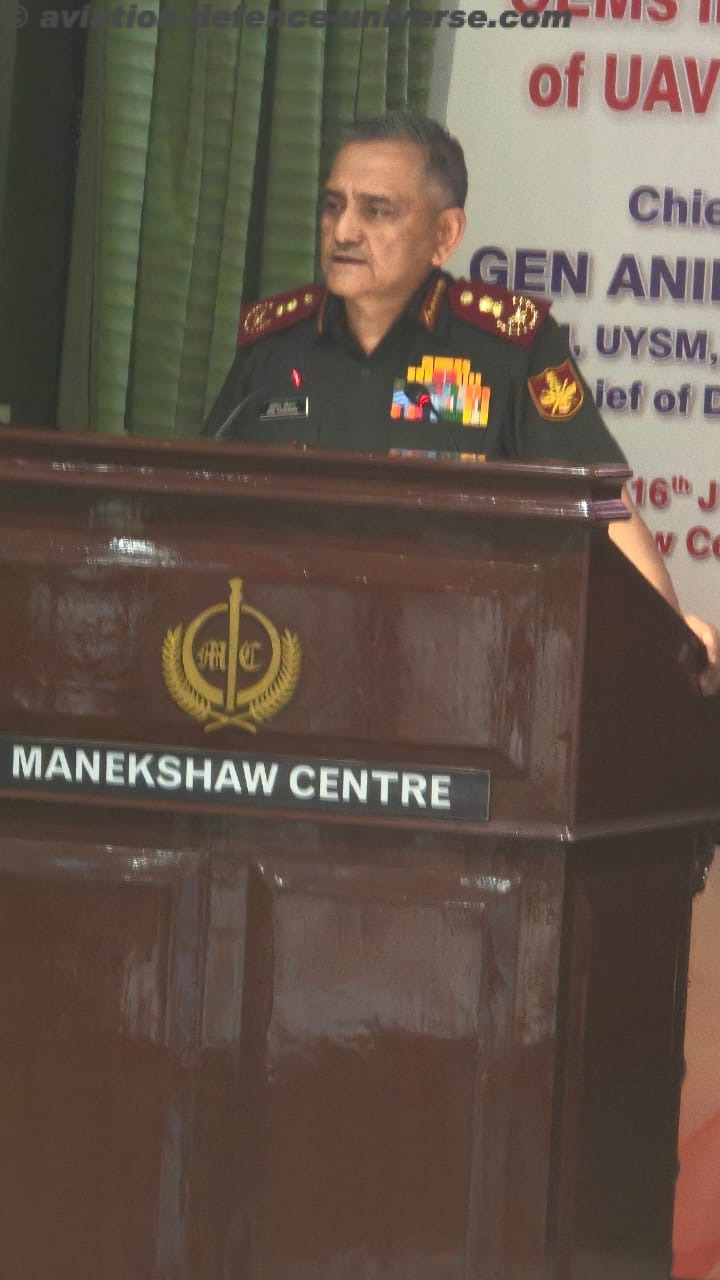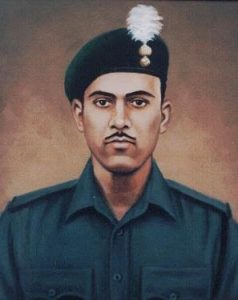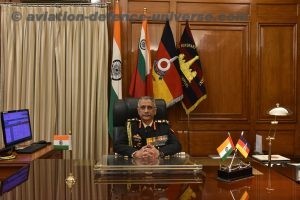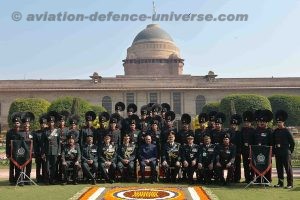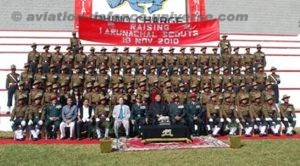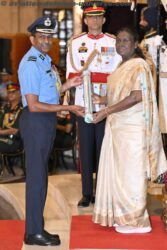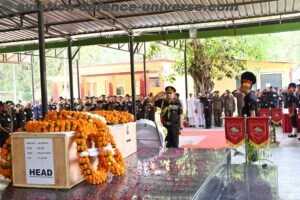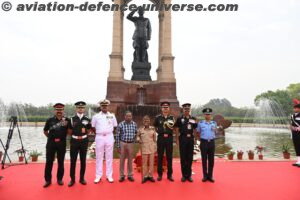- 55 years since he laid his life for the nation
New Delhi. Never can the tank battle during India-Pakistan 1965 War be written about and the name of Abdul Hamid be forgotten. Glory was his when the 1965 Indo-Pak war was at its prime. He got martyrdom 55 years ago on 10th September 1965 and was awarded the Param Vir Chakra (India’s highest gallantry medal) for the indomitable valour he put on display while destroying Pakistani tanks. Abdul Hamid – after martyrdom, was given also the title of “Tank-Destroyer”
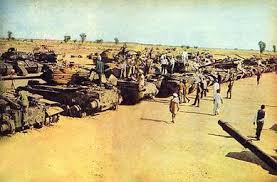
After five years of service in the anti-tank section Abdul Hamid had recently been promoted and given charge of quartermaster stores of his company. As he was the best 106mm recoilless rifle shot in the battalion, he was reverted to his former charge as NCO commanding the battalion’s recoilless rifle platoon.
In the Lahore sector of operations, 4 Mountain Division of India, having been rebuffed in its advance to the Ichhogil by the Pakistani counter-offensive, fell back to the Khem Kharan area. In the new defence plan of the Division, 4 Grenadiers, along with three other battalions of the division formed a defence line between Assal Uttar and Chima villages on the Khem Karan-Bhikhiwind-Amritsar road and the Patti axis. 4 Grenadiers was on the northern flank in general area of Chima village while other battalions were to the south ending with its sister battalion, 7 Grenadiers, in Asal Uttar village itself.
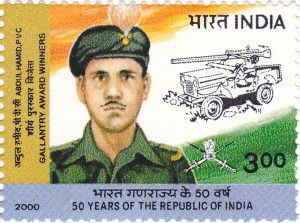
Earlier the battalion had captured its objective on the Ichhogil canal but being outflanked by the Pakistani counter-offensive was ordered back to new positions. It had already been in combat for more than 24 hours when it began digging trenches and weapon pits in its defensive positions. The battalion defended area was covered with cotton and sugarcane fields and the battalion was able to camouflage its location, using ploughed fields for field of fire. The 106mm recoilless guns were deployed along the Khem Karan-Amritsar road.On 8 September, the enemy made repeated probing attacks on the 4th Grenadiers position. The battalions recoilless weapons and automatics were effectively sited by Hamid’s company officers, Lt H. R. Jahnu and 2Lt V. K. Vaid. That afternoon Abdul Hamid destroyed two Patton tanks, the commander of one of which asked Hamid for directions just before Hamid destroyed the tank.
On 10 September 1965 at 0800 hours, a battalion of Pakistani armour supported by Patton tanks attacked the 4th Grenadier positions but was unable to locate the battalion’s defences. The attack preceded by intense artillery bombardment to soften the target and to garner a heavy fire in an attempt to draw Indian response. By 0900 hours, the enemy tanks had penetrated the forward company positions. In the melee, Hamid saw a group of Pattons heading towards his battalion defences. Seeing the gravity of the situation, he moved out to a flank with his gun mounted on a jeep. Intense enemy shelling and tank fire did not deter him. He fired continuously knocking out three Pattons one after another but was killed by tank fire from the fourth before he could engage it.
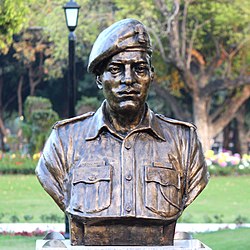
Successful actions by Indian armour, artillery and infantry anti-tank actions, such as those of Abdul Hamid, tarnished the reputation of the M48 Patton and after the 1965 war, the M48 was largely replaced by the M60. India set up a war memorial named “Patton Nagar” (“Patton Town”) in Khemkaran District, where the captured Pakistani Patton tanks are displayed.
His complete disregard for personal safety and his sustained acts of bravery in the face of fierce enemy fire inspired his fellow soldiers and, the enemy’s advance was halted.
Born in a village in eastern Uttar Pradesh (then United Provinces) in 1933 to an ex-army man, Abdul Hamid always aspired to be an army jawan. He joined the army in 1954, and was part of a battalion that fought China in 1962.
In his memory, a mausoleum was constructed on his grave by the 4th Grenadiers at Asal Uttar and each year a “mela” is organised on the date of his martyrdom. The residents of Asal Uttar have named and operate a dispensary, library and school in the village. In his honour, the Army Postal Service issued a special cover on 10 September 1979.
A pictorial postage stamp of value Rs 3 was issued by India Post on 28 January 2000 as part of a set of five postage stamps on gallantry award winners. The stamp had Abdul Hamid’s bust on it along with an illustration of a jeep with recoilless rifle.
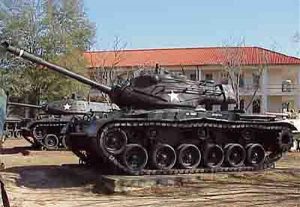
A memorial to Abdul Hamid was constructed in his home village of Dhamupur but later fell into neglect. The memorial was renovated in 2011 by the Flags of Honour Foundation on Hamid’s 46th death anniversary. The renovation included the installation of a new statue of him, repair and painting of gates and boundary and improvement of the garden. Indian Member of Parliament Rajeev Chandrasekhar, founder of Flags of Honour, spoke on the occasion.
CITATIONCOMPANY QUARTERMASTER HAVILDAR ABDUL HAMID4 GRENADIERS (NO 2639985)
At 0800 hours on 10 September 1965 Pakistan forces launched an attack with a regiment of Patton tanks on a vital area ahead of village Cheema on the Bhikkiwind road in the Khem Karan Sector. Intense artillery shelling preceded the attack. The enemy tanks penetrated the forward position by 0900 hours. Realising the grave situation, Company Quartermaster Havildar Abdul Hamid who was commander of a RCL gun detachment moved out to a flanking position with his gun mounted on a jeep, under intense enemy shelling and tank fire. Taking an advantageous position, he knocked out the leading enemy tank and then swiftly changing his position, he sent another tank up in flames. By this time the enemy tanks in the area spotted him and brought his jeep under concentrated machine-gun and high explosive fire. Undeterred, Company Quartermaster Havildar Abdul Hamid kept on firing on yet another enemy tank with his recoilless gun. While doing so, he was mortally wounded by an enemy high explosive shell.
Havildar Abdul Hamid’s brave action inspired his comrades to put up a gallant fight and to beat back the heavy tank assault by the enemy. His complete disregard for his personal safety during the operation and his sustained acts of bravery in the face of constant enemy fire were a shining example not only to his unit but also to the whole division and were in the highest traditions of the Indian Army.
The award was announced on 16 September 1965, less than a week after the battle that cost his life. The award was presented to his spouse, Rasoolan Bibi by Sarvepalli Radhakrishnan, then President of India during the 1966 Republic Day Parade.
Aviation & Defence Universe salutes Havildar Abdul Hamid for his valour and selfless service and the motherland for producing such a son.











